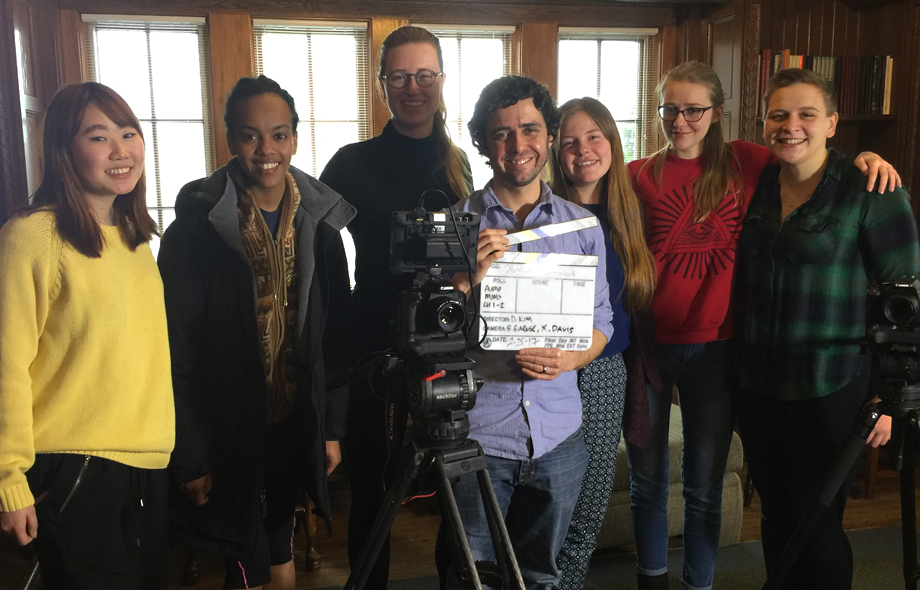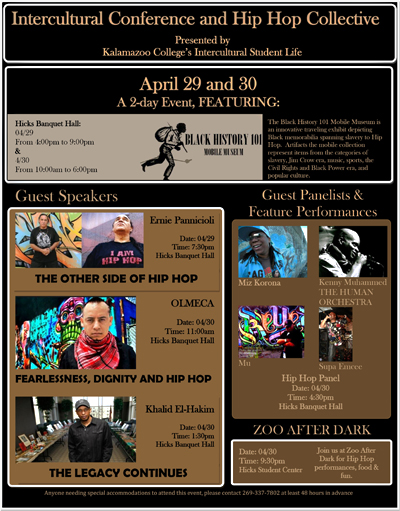 Several students from Visiting Instructor of Art Danny Kim‘s videography classes had the opportunity to interview Jeremy Sabella, author of the companion book of the new documentary, “An American Conscience: The Reinhold Niebuhr Story.”
Several students from Visiting Instructor of Art Danny Kim‘s videography classes had the opportunity to interview Jeremy Sabella, author of the companion book of the new documentary, “An American Conscience: The Reinhold Niebuhr Story.”
The K students asked the questions and did all of the sound and camera work required for the interview. They focused on the reasons the filmmakers chose to tell Neibuhr’s story. Their interview will be featured on the film’s website in coming weeks. The documentary film is currently screening in select locations this spring and will air on PBS later this year. It features interviews with many internationally recognized historians and scholars, including former Kalamazoo College professor Gary Dorrien, the Reinhold Niebuhr Professor of Social Ethics at Union Theological Seminary and Professor of Religion at Columbia University.
Neibuhr was one of America’s most prominent 20th-century theologians and political thinkers, noted for his unrelenting advocacy for justice and for the incisive clarity of his thinking and writing. Presidents from Barack Obama to Jimmy Carter have credited his impact on their thinking, as well as John McCain, countless historians, theologians, political thinkers, and Dr. Martin Luther King, Jr., who cited Niebuhr in his “Letter from a Birmingham Jail”.
Niebuhr’s books, Moral Man and Immoral Society (1932), The Nature and Destiny of Man (1941–43) and The Irony of American History (1952), continue to influence theological and political thinking. His insights into human nature and its relationship to political movements and social justice propelled him to speak openly, and often critically, to an America consumed by moral certainty. The documentary includes interviews with many prominent
The K “Sabella Interview” production crew included (l-r): Christine Cho, Kalkidan Amare, Mackenzie Landman, author Jeremy Sabella, Madeline Lauver, Ximena Davis and Blair Garner. Sabella is married to Sarah Koenig, visiting assistant professor in K’s religion department.





 Associate Professor of Art History Christine Hahn published an article, “Maintaining Problematic Art: A Case Study of Philip Evergood’s The Bridge of Life (1942) at Kalamazoo College.” The article was published in Public Art Dialogue (6:1, 116-130) on May 27, 2016.
Associate Professor of Art History Christine Hahn published an article, “Maintaining Problematic Art: A Case Study of Philip Evergood’s The Bridge of Life (1942) at Kalamazoo College.” The article was published in Public Art Dialogue (6:1, 116-130) on May 27, 2016. Nora Naranjo Morse will deliver the annual Phi Beta Kappa lecture at Kalamazoo College on Tuesday, October 11, at 8 p.m. in the Mandelle Hall Olmsted Room. The event is free and open to the public. Morse Morse is a sculptor, writer, and producer of video films that look at the continuing social changes within Pueblo Indian culture. Her talk, “Numbe Wahgeh,” focuses on the historical treatment of the Pueblo people and history retold by indigenous peoples.
Nora Naranjo Morse will deliver the annual Phi Beta Kappa lecture at Kalamazoo College on Tuesday, October 11, at 8 p.m. in the Mandelle Hall Olmsted Room. The event is free and open to the public. Morse Morse is a sculptor, writer, and producer of video films that look at the continuing social changes within Pueblo Indian culture. Her talk, “Numbe Wahgeh,” focuses on the historical treatment of the Pueblo people and history retold by indigenous peoples.




